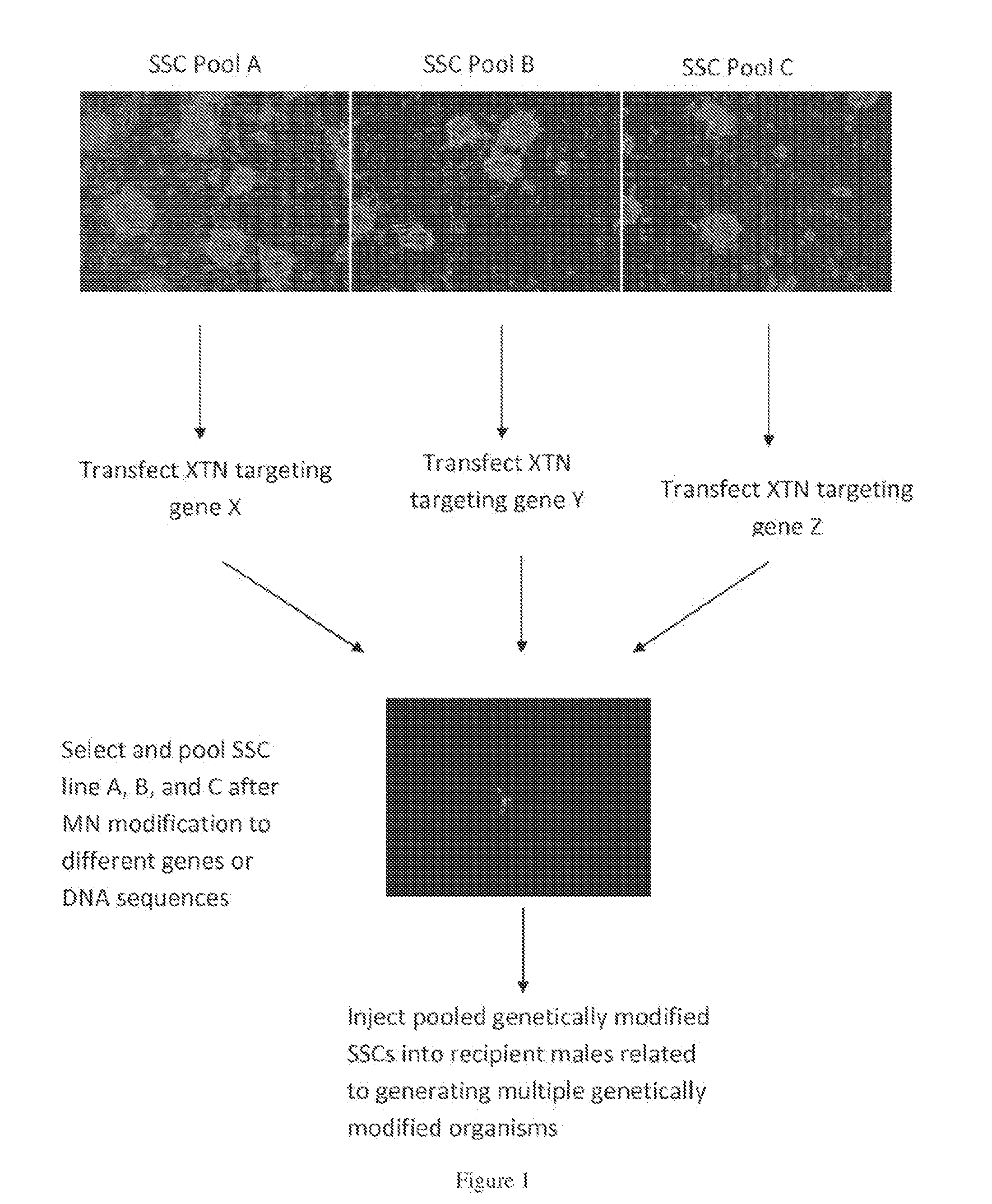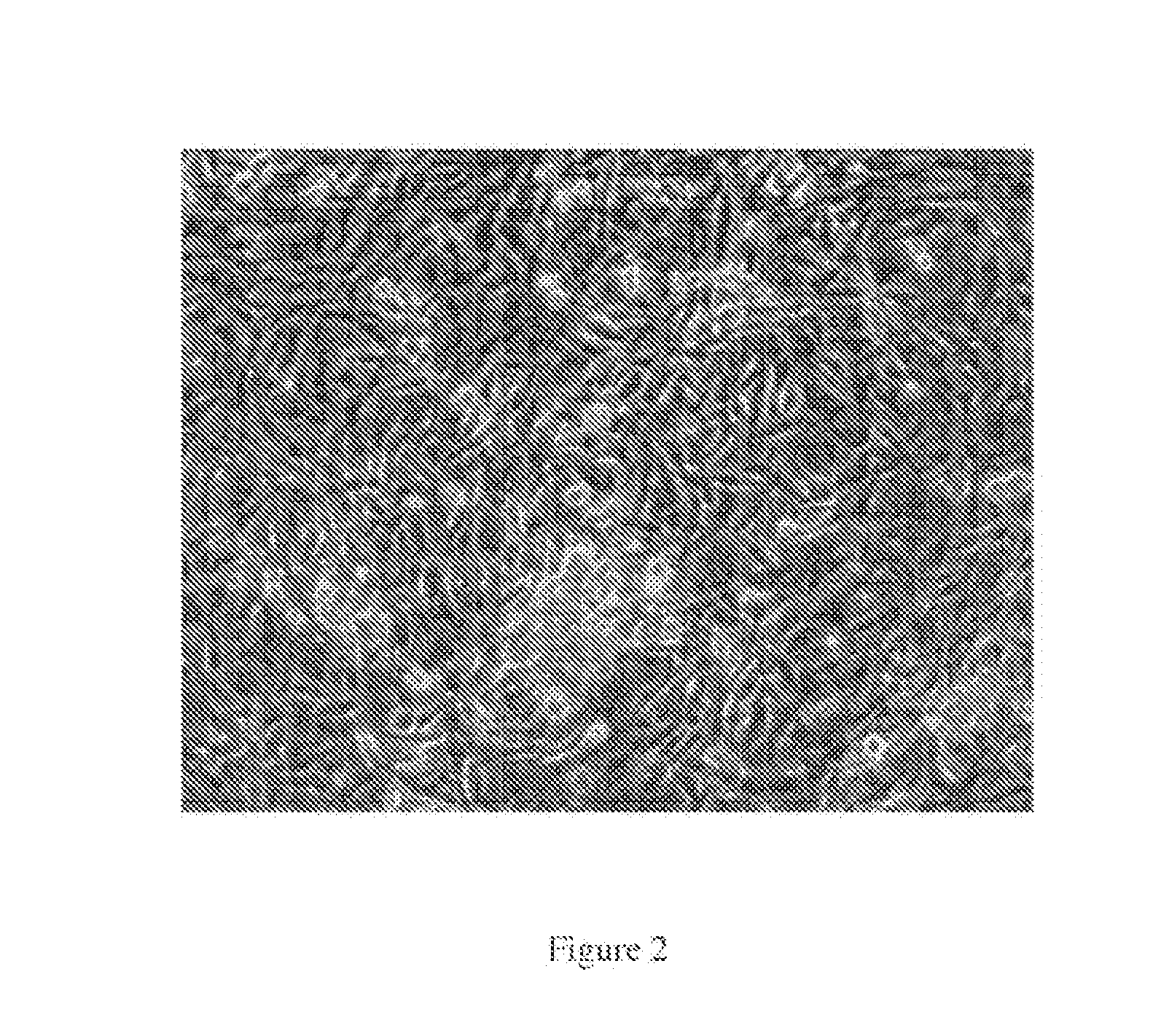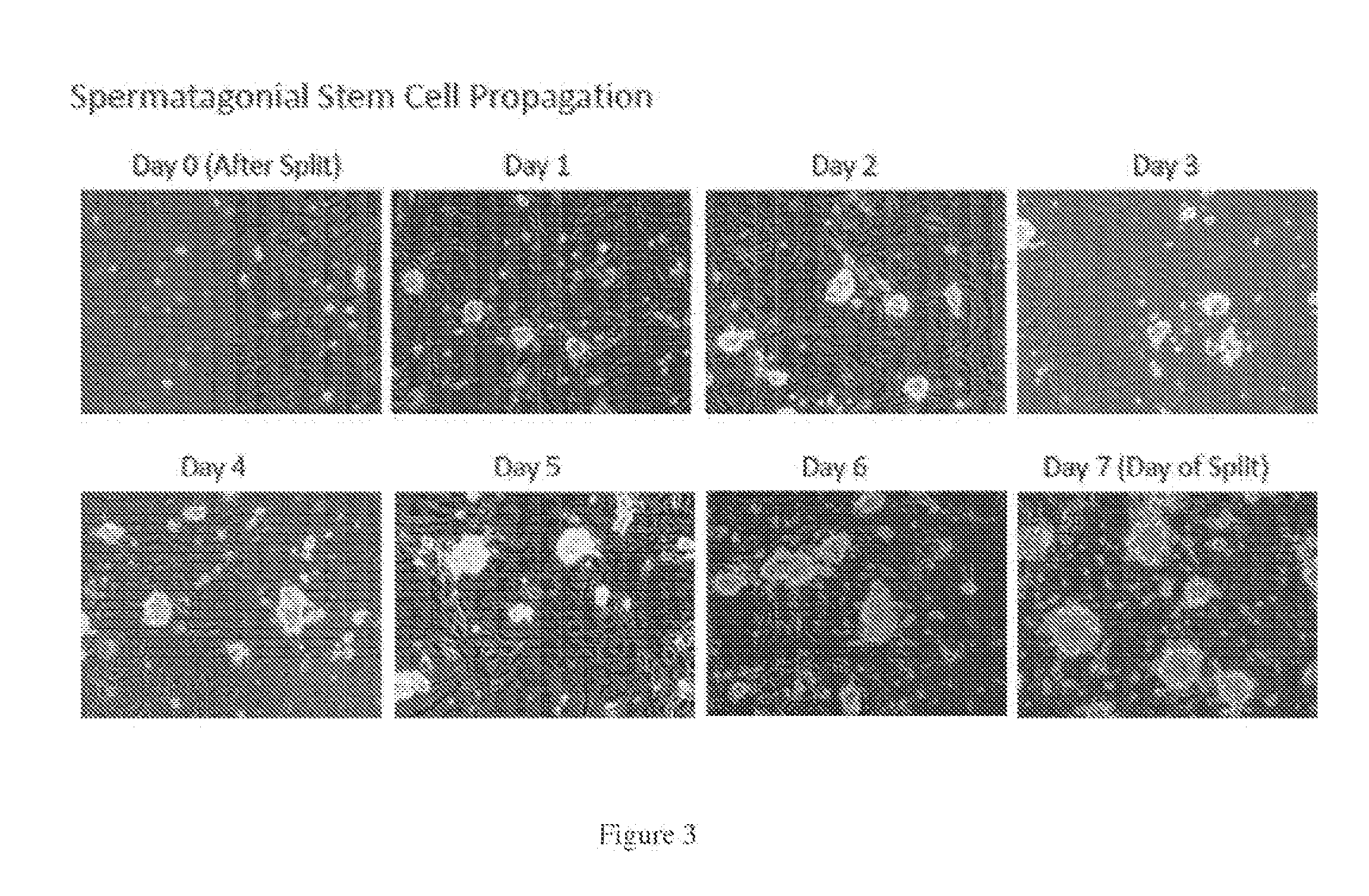Methods for site-specific genetic modification in stem cells using xanthomonas tal nucleases (XTN) for the creation of model organisms
a technology stem cells, which is applied in the field of site-specific genetic modification in stem cells using xant, can solve the problems of sscs from rats and most other species not being successfully targeted using site-specific technologies, and the level of rna chang
- Summary
- Abstract
- Description
- Claims
- Application Information
AI Technical Summary
Benefits of technology
Problems solved by technology
Method used
Image
Examples
example 1
Generation of Knockout Rats: Gene Disruption Technique Targeting the Rag 1 Gene (Prophetic)
[0290]XTN technology can specifically bind and cleave designated DNA sequences for mutation of the targeted sequence. A schematic of wild type SSCs in colony are shown in FIG. 2. Site-specific XTN will be used to genetically modify rat spermatogonial stem cells (SSCs). In one example, the site-specific technology using XTN will be employed. XTN DNA binding domains can be engineered to bind to a sequence of choice. The XTN binding domain will be engineered to bind to the rat Rag1 gene, proposed binding and mutation sites as well as XTN sequences are shown in FIG. 5. The rat Rag1-specific XTN will be expressed in rat spermatogonial stem cells (SSCs) along with a selection marker (e.g. fluorescent marker or homologous recombination vector) which will indicate that the XTN construct was successfully transfected into the cell. FIG. 4 displays a schematic of wild type SSCs as well as SSCs that will ...
example 2
Generation of Nrf2-Mutations in Spermatogonial Stem Cells
[0291]2×106 rat SSCs were transfected with approximately 30 milligrams of a Nrf2-specific XTN pair. The cells were co-transfected with a DsRed-neo plasmid, which expresses a red fluorescent marker gene and a neomycin resistance gene. The cells were allowed to incubate in culture for 120 hours before isolation of clones. DsRed-neo positive cells were isolated by selecting for G418R cells (selection for neo-positive cells). DNA from the stem cells were amplified using primers flanking the XTN-binding site and individual products were cloned for sequence analysis for the presence of non-homologous junction points (NHEJ). PCR products generated from Nrf2 XTN-transfected cells were shotgun TOPO cloned and 90 clones were sequenced. 86 good quality reads were generated and compared against the wild type sequence for Nrf2. Five clones of the 86 generated clones demonstrated an NHEJ event which is equivalent to about 6% frequency (FIG....
example 3
Generation of Knockout Minipigs: Gene Disruption Technique Targeting the Rag1 Gene (Prophetic)
[0295]Examples include using the site-specific Xanthomonas TAL Nuclease (XTN) technology, which can specifically bind and cleave designated DNA sequences for mutation of the targeted sequence. Site-specific XTN can be used to genetically modify minipig spermatogonial stem cells (SSCs).
[0296]In one example, the site-specific technology using Xanthomonas TAL Nuclease (XTN) will be employed. XTN DNA binding domains can be engineered to bind to a sequence of choice. The XTN binding domain will be engineered to bind to the minipig Rag1 gene. The minipig Rag1 sequence as well as a proposed XTN binding site is shown in FIG. 7. The minipig Rag1-specific XTN will be expressed in minpig spermatogonial stem cells (SSCs) along with a selection marker (e.g. fluorescent marker or homologous recombination vector) which indicates that the XTN construct was successfully transfected into the cell. The XTN an...
PUM
| Property | Measurement | Unit |
|---|---|---|
| Fraction | aaaaa | aaaaa |
Abstract
Description
Claims
Application Information
 Login to View More
Login to View More - R&D
- Intellectual Property
- Life Sciences
- Materials
- Tech Scout
- Unparalleled Data Quality
- Higher Quality Content
- 60% Fewer Hallucinations
Browse by: Latest US Patents, China's latest patents, Technical Efficacy Thesaurus, Application Domain, Technology Topic, Popular Technical Reports.
© 2025 PatSnap. All rights reserved.Legal|Privacy policy|Modern Slavery Act Transparency Statement|Sitemap|About US| Contact US: help@patsnap.com



